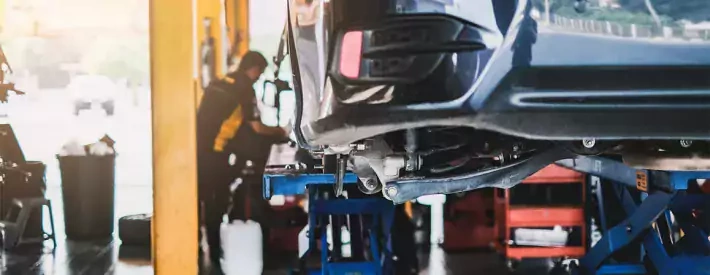It’s my MOT tester’s fault, honest

If the DVSA pays your business a visit, make sure everything’s in order, because even if the problem is a rogue tester, you could end up paying the price
Recently a garage owner called me for advice. Apparently, a DVSA examiner had arrived at the garage, and a vehicle was logged on for a test. However, the vehicle wasn’t there. The owner was naïve enough to assume it was just bad luck, and some sort of administrative error had taken place on the part of the tester.
I suggested that it was more likely that DVSA had got wind of improper testing, and had sat around the corner with a laptop, waiting for a vehicle to be registered. And why would DVSA get such ideas from? You’d be surprised how word gets about.
The promise held on file
Does form number VT01 mean anything to you? If the answer is yes, then you probably recently made changes to your MOT Authorisation. But the chances are it doesn’t spring to mind as it was filled in many years ago. But it’s still important, so let’s take a look at it.
The VT01 is used to apply to run, or make changes to an MOT station. But actually, it’s also the form DVSA get you to sign up to their “club”, and like all clubs, it has rules. However, that form, and its promises are easily forgotten. So, let’s have a quick refresh.
These are just a few taken from it, but is by no means the complete set.
All MOT tests must be carried out following the rules in:
- Section 45 of the Road Traffic Act 1988
- The Motor Vehicles (Tests) Regulations
- The MOT inspection manual
- The MOT testing guide
- The requirements for authorisation
- Supplementary information DVSA issues from time to time, that’s applicable at the time of test
- All MOT tests must be carried out at the premises shown on the authorisation certificate (VT9).
What’s the big take for us?
As an MOT station owner or manager it’s vital that the following is understood: ‘The AE has full responsibility for the actions of their MOT testers and for ensuring that acceptable standards of MOT testing are maintained.’
This statement, that someone in your testing station signed, (and is kept on file all the time your authorised to test), is what DVSA can hang you out to dry for.
There is a growing myth that an MOT station can argue that withdrawal from the MOT scheme is unfair, as it was the tester’s actions that caused the disciplinary case in the first instance. They rely on the fact that only the tester who registers that test is empowered to pass or fail the vehicle/component. But this is a specious argument when serious shortcomings such as a vehicle not being on site during a test is discovered.
It’s very hard if you are the unhappy business owner who loses the right to test because of the actions of a tester, however, if the business owner can’t keep the testers in control, who can?
Don’t convince yourself that short term profits are worth it, as it could lead to a lot of long-term pain.
It might seem like your business is bubbling along nicely and staff are cracking on with the job in hand with the MOT quality controller having effective sole managerial control of the MOT bay while the proper work is controlled by the Manager, but it’s essential that the manager of the VTS also manages the MOT testing responsibilities. It’s a system that works, and you should be using.
Where can you find help?
Don’t wait for things to go wrong. Take a look at the guidance issued by DVSA, and don’t forget, as a business, you are responsible for your tester’s actions. There’s no get of jail free card.




